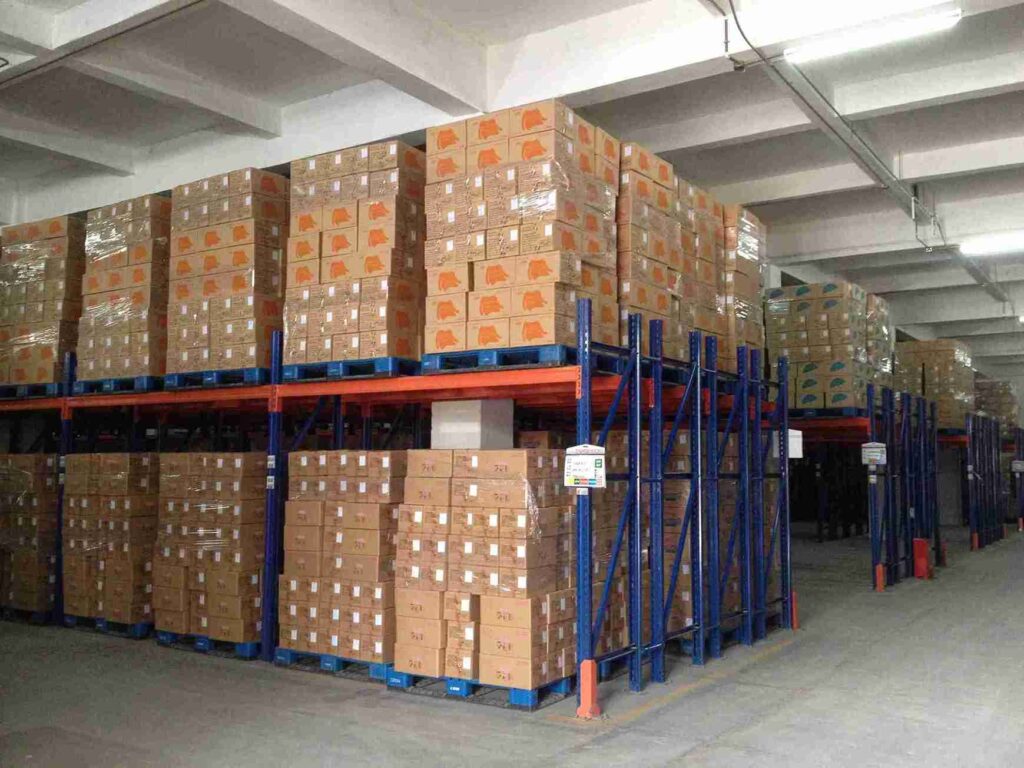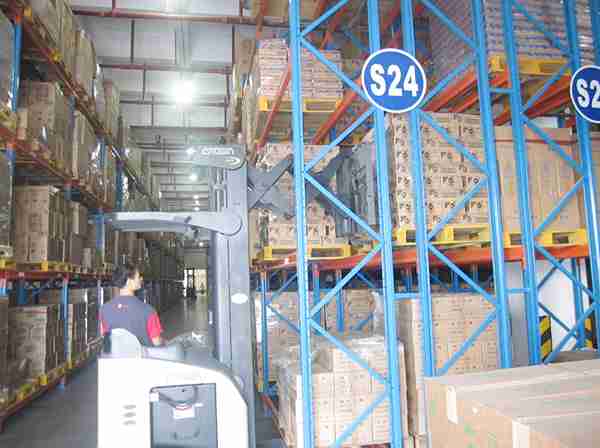📐 "First 50 Enterprise Queries Get Custom 3D Warehouse Design" Plan

Introduction: Why Safety Barriers for Racking Systems Are Non-Negotiable
In modern warehouses, safety barriers for racking systems play a critical role in preventing accidents, protecting inventory, and ensuring compliance with workplace safety regulations. Whether dealing with double deep racking, selective racking, or drive-in systems, the right safety barriers for racking systems can mean the difference between smooth operations and costly disasters.
This guide dives deep into the best safety barriers for racking systems, covering types, installation best practices, cost considerations, and real-world case studies. Warehouse managers, safety officers, and logistics professionals will find actionable insights to enhance workplace safety and efficiency.

1. The Critical Role of Safety Barriers for Racking Systems
1.1 Why Every Warehouse Needs Safety Barriers for Racking Systems
Safety barriers for racking systems are not optional—they are a fundamental requirement in any high-density storage environment. Without them, warehouses face:
- Forklift collisions damaging racking uprights
- Unstable pallets causing load collapses
- Worker injuries from falling debris or impacts
1.2 How Safety Barriers for Racking Systems Improve Efficiency
Beyond protection, safety barriers for racking systems contribute to:
- Reduced downtime from racking repairs
- Lower insurance premiums due to fewer accidents
- Better workflow organization with clearly marked hazard zones
2. Top Types of Safety Barriers for Racking Systems
2.1 Steel Guard Rails: The Heavy-Duty Solution
When it comes to safety barriers for racking systems, steel guard rails are the gold standard for high-impact areas.
Key Advantages:
- Unmatched durability against forklift collisions
- Long lifespan (10+ years with minimal maintenance)
- Customizable heights for different racking configurations
Best Applications:
- High-traffic forklift zones
- Loading docks
- Narrow aisle racking systems
2.2 Column Protectors: Targeted Impact Absorption
For warehouses where space is tight, column protectors are an essential type of safety barriers for racking systems.
Why They Work:
- Absorb direct impacts without transferring force to the racking
- Low-profile design doesn’t obstruct workflow
- Easy to retrofit onto existing racking
Best Applications:
- Double deep racking systems
- Drive-in racking configurations
- Cold storage warehouses
2.3 Bollards: The Flexible Safety Barrier for Racking Systems
Bollards are among the most versatile safety barriers for racking systems, offering both protection and visibility.
Key Benefits:
- Highly visible (often in bright yellow or with reflective strips)
- Modular and relocatable as warehouse layouts change
- Effective at stopping low-speed impacts
Best Applications:
- Racking entry points
- Pedestrian walkways near racking
- End-of-aisle protection
2.4 Wire Mesh Partitions: Safety Without Sacrificing Visibility
For environments where airflow and visibility are crucial, wire mesh partitions serve as excellent safety barriers for racking systems.
Why They’re Ideal:
- Prevent unauthorized access while maintaining visibility
- Lightweight yet strong enough to withstand impacts
- Customizable to fit various racking heights
Best Applications:
- Mezzanine safety barriers
- Areas where workers and forklifts operate closely
- Warehouses requiring ventilation
2.5 Polymer Barriers: The Modern Alternative to Steel
For facilities where corrosion resistance is key, polymer safety barriers for racking systems provide a durable, low-maintenance solution.
Key Advantages:
- Resistant to rust, chemicals, and extreme temperatures
- Flexible design absorbs impacts without damaging forklifts
- Lightweight for easier installation
Best Applications:
- Food and pharmaceutical storage
- Cold storage warehouses
- Outdoor storage yards
3. How to Choose the Best Safety Barriers for Racking Systems
3.1 Assessing Warehouse Layout and Traffic Flow
Selecting the right safety barriers for racking systems starts with understanding:
- Forklift traffic density (high vs. low frequency)
- Racking configuration (double deep, selective, drive-in)
- Pedestrian interaction zones
3.2 Compliance with OSHA and Industry Standards
All safety barriers for racking systems must meet:
- OSHA 1910.176 (Material Handling & Storage)
- ANSI MH16.1 (Rack Safety Standards)
- Local fire codes (clearance requirements)
3.3 Cost vs. Longevity: Finding the Right Balance
While steel barriers have a higher upfront cost, their 10+ year lifespan often makes them more economical than cheaper alternatives requiring frequent replacement.
3.4 Installation and Maintenance Considerations
- Permanent barriers (bolted or concreted) vs. modular options
- Ease of cleaning and inspection
- Reflective markings for visibility
4. Real-World Impact: Case Studies on Safety Barriers for Racking Systems
4.1 Case Study: Steel Guard Rails Prevent $50,000 in Racking Repairs
A Midwest distribution center installed steel guard rail safety barriers for racking systems after repeated forklift collisions. Within a year:
- Racking damage incidents dropped by 90%
- Insurance premiums decreased by 15%
- Forklift operators reported better visibility
4.2 Case Study: Bollards Save Time and Reduce Near-Misses
An e-commerce warehouse added bollard safety barriers for racking systems at high-risk turning points. Results included:
- Zero forklift-racking collisions in 8 months
- Improved traffic flow around racking aisles
- Easier compliance with OSHA audits
5. Future Innovations in Safety Barriers for Racking Systems
The next generation of safety barriers for racking systems includes:
- Smart barriers with impact sensors (alerting managers to collisions in real-time)
- Self-healing polymer materials (reducing maintenance costs)
- AI-powered collision avoidance systems (integrating with forklift telematics)
Conclusion: Investing in the Right Safety Barriers for Racking Systems Pays Off
Choosing the best safety barriers for racking systems is not just about compliance—it’s about protecting people, inventory, and profits. Whether opting for steel guard rails, bollards, or polymer barriers, the right solution enhances safety and operational efficiency.
Key Takeaways:
✔ Steel barriers offer the highest durability for high-impact zones.
✔ Bollards and column protectors are ideal for flexible protection.
✔ Regular inspections ensure long-term effectiveness.
For warehouses looking to optimize safety, safety barriers for racking systems are a must-have investment.
FAQs: Safety Barriers for Racking Systems
1. How often should safety barriers for racking systems be inspected?
At least monthly, with immediate repairs for any visible damage.
2. Can safety barriers for racking systems be customized for different rack heights?
Yes, most manufacturers offer custom heights and configurations.
3. Do safety barriers for racking systems interfere with forklift operations?
Properly installed barriers enhance safety without restricting movement.
4. What’s the most cost-effective safety barrier for racking systems?
Column protectors provide strong protection at a lower cost than full guard rails.
5. Are polymer safety barriers for racking systems as strong as steel?
While different in composition, high-grade polymers offer comparable impact resistance in many applications.




